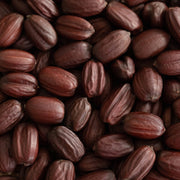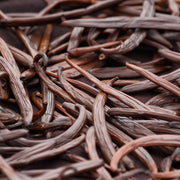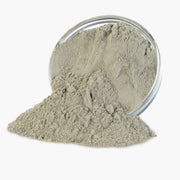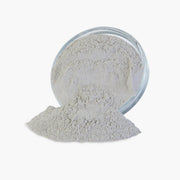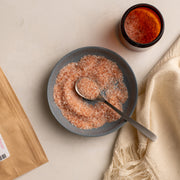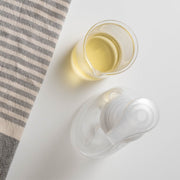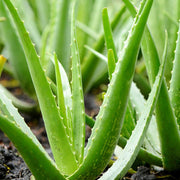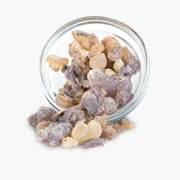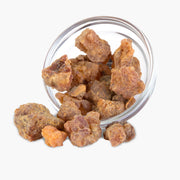Types of carriers you can work with

Types of carriers you can work with
In this chapter, you’ll discover the differences between oils, butters, waxes, lotions, and other types of carriers that can dilute essential oils. You’ll also learn when to use each type of carrier, so you can more easily navigate your blending options.
You can browse all types or, use the clickable list below to jump to a specific type of carrier.
Types of carriers you can work with:

Carrier oils
Carrier oils are produced by a variety of plants, and are often pressed from seeds, nuts, kernels, or even dried fruit. Oils are primarily made up of saturated and unsaturated fatty acids.

Carrier oils’ loose textures makes them easy to work with. Most are liquids, although some—like coconut oil—will turn solid in cooler temperatures. (And it’s absolutely okay if that happens!) You can use just one carrier oil all by itself, or combine several to create a blend of oils.
Some carrier oils can be infused with herbs or other plants traditionally used for muscles, joints, or skin damage . . . or just because they smell good!
Vanilla infused jojoba is a great example.
We make this infused oil right here at Aromatics! We start with pure, certified organic jojoba oil, and then we add a dollop of wildcrafted vanilla oleoresin and a hint of vanilla absolute. After sitting for a few weeks, the jojoba—which otherwise doesn’t have much of a scent—has taken on the decadent aroma of vanilla!
SHOP CARRIER OILSWith carrier oils it's a case of “like attracts like”—the lipids in carrier oils are naturally drawn to the lipids in your skin. That’s why your skin absorbs them so well!
Recipes with carrier oils
Butters & waxes
Butters and waxes add a skin nourishing and therapeutic quality to body butter and lotion blends. Unrefined, these carriers offer the aromatherapist a variety of options and naturally help thicken whipped butter, cream, and lotion. Use these lovely butters and waxes to make creative blends.

Butters
Like carrier oils, butters are lipids composed of saturated and unsaturated fatty acids. They’re also usually pressed from the seeds, nuts, or kernels of plants.
But they tend to be much thicker than oils. Butters have dense, heavy textures, and are sometimes difficult to use all by themselves. Shea butter (Vitellaria paradoxa/Butyrospermum parkii) and cocoa butter (Theobroma cacao) are beautifully decadent, deeply moisturizing, and soothing for skin—but you might have a little trouble using them without melting them down first!
Make them easier for daily use by melting them over your stove and blending them with carrier oils. You can soften them as much as you like in this way!
Waxes
Waxes are typically solid at room temperature, and are compatible with lipid-rich substances, like oils and butters. Natural waxes are made by bees and some plants.
You can use wax to add texture and firmness to your body butters and balms. A little goes a long way! Wax can turn a soft, melty butter into a firm salve. Waxes also don’t absorb quickly, so they let your blends linger for a while on the surface of your skin. This is an important quality for something like a dry skin salve applied to cracked, sore knuckles, or for a protective lip balm—both products intended to seal in moisture. It also means that any essential oils in your blend will spend more time on your skin, rather than being quickly absorbed.
Beeswax, of course, comes from bees! They collect nectar from flowers, and convert the nectar into honey. Then they use specialized glands to change the sugar from the honey into wax. That’s what they use to build their honeycomb. (That’s why beeswax smells like honey!)
Some waxes come from plants, such as jojoba wax (Simmondsia chinensis).
Jojoba is in a category all its own!
It’s technically a liquid wax, but it looks and behaves like an oil. That’s why it’s often called “jojoba oil.”
Recipes with butters & waxes
Clays & salts
The earth minerals of clays and salts offer much to the aromatherapist for their deep cleansing and healing properties. From wound care to detoxifying and everyday skin care, mother earth has provided us with a nice assortment of naturally occurring therapeutic tools.

Clays
Clays are dry, mineral-rich substances that come from the earth. They can be a variety of colors, depending on the mineral content of the clay. At Aromatics, we carry French green clay, sodium bentonite clay, gentle white kaolin clay, and reddish rhassoul clay.
You can use clay in a lot of ways! It’s excellent for exfoliating scrubs and beauty masks.
To make a beauty mask, just take a little clay and add a splash of water or hydrosol (you’ll learn about hydrosols in Chapter 5!) That makes it easy to spread the clay onto your skin. Letting it dry usually takes about ten to fifteen minutes, and then you can sponge it off. Clay masks are often used for issues like acne, oily skin, or toning the pores.
Clay is also a great ingredient for a poultice or compress for a sore, irritated area of skin, or for an achy muscle.
Salts
Like clay, salts are mineral-rich substances made by our Mother Earth. We usually use salts to flavor our food. But they have plenty of uses in body products, too!
Salts come in fine grain, small grain, and larger grains. The finer grains make wonderful exfoliants for the skin, while the larger grains work well in abrasive scrub recipes to clean your home naturally.
Adding pink Himalayan salt to your bath water is said to nurture your skin with the minerals in the salt, loosen tense muscles, and simply create a more overall luxurious, spa-like bath! You can customize your bath salts by adding a carrier oil and essential oils, too. Try making a relaxing bath blend to release muscle tension before bed, or make a breath-clearing bath salt during cold season.
SHOP CLAYS & SALTSRecipes with clays & salts
Lotions, soaps & gels
These products range from emulsifiers to skin softening and nourishing products that make foaming hand soaps a breeze to create as well as natural and effective healing body lotions. Add aloe vera gel to hydrosols and stand-alone products for healing sprays.

Lotions
Lotion is a lightweight, moisturizing carrier you can apply directly to your skin. You can use lotion alone or add essential oils to it.Lotion usually absorbs quickly.
It’s non-greasy, making it ideal for daily moisturizing or keeping hands hydrated without making them feel oily.
Learn more about lotions in Chapter 5.Soaps
Soaps purify the skin and other surfaces.
You can use liquid Castile soap as a carrier for essential oils, blend it with other carriers (including oils, jojoba wax, water, and hydrosol), or use it all by itself!
There are many recipes for soap. At Aromatics, our gentle, natural liquid Castile soap is made from organic vegetable oils in a process that originated in the Castile region of Spain.
Gels
Gels are semi-liquid, water-based substances.
Gels are non-greasy and absorb quickly.
They’re great carriers when you want to deliver the benefits of essential oils quickly to an area.
Aloe vera gel is an excellent example! Aloe gel contains all the skin-nourishing benefits of aloe vera. It soothes irritated skin and cools heat, and is even helpful for these purposes when used all by itself.
Essential oils won’t readily blend into it (because it’s water-based), but you can encourage oils to disperse through the aloe gel with a natural dispersant like Solubol. You can also blend carrier oils with aloe, but you’ll need to shake the product well before each use.
Learn more about aloe vera gel and Solubol in Chapter 5.
SHOP LOTIONS, SOAPS & GELSRecipes with lotions, soaps & gels
Resins & burnables
Enjoy safe resin burning with ash and non-toxic charcoal to create a resinous air cleansing experience. Burning resin has been used for centuries in churches and homes alike, for a magical, spiritual, and intentional air cleansing and calming ritual.

Hard resins are solidified plant saps.
You can burn frankincense, myrrh, or opopanax resin over charcoal to release a fragrant smoke. Or try combining the resins—along with dried herbs, spices, other plant materials, and even a few drops of essential oil—to create your own loose incense recipe.
This is what white ash and cedar charcoal tablets are used for. Lay a bed of ashes in a heat-safe incense burner or ceramic dish, then nestle a lit tab of charcoal into the ashes. Sprinkle your loose resin right onto the charcoal and it will burn as incense!
Watch a quick example of how to burn resins with ash and charcoal.
SHOP RESINS & BURNABLES
Types of carriers you can work with
Join Our Newsletter
Save 15% on your first order
Aromatherapy sent directly to your inbox. Receive tips, essential oil recipes, promotion alerts, live events and more. We look forward to connecting with you! *Exclusions apply.






